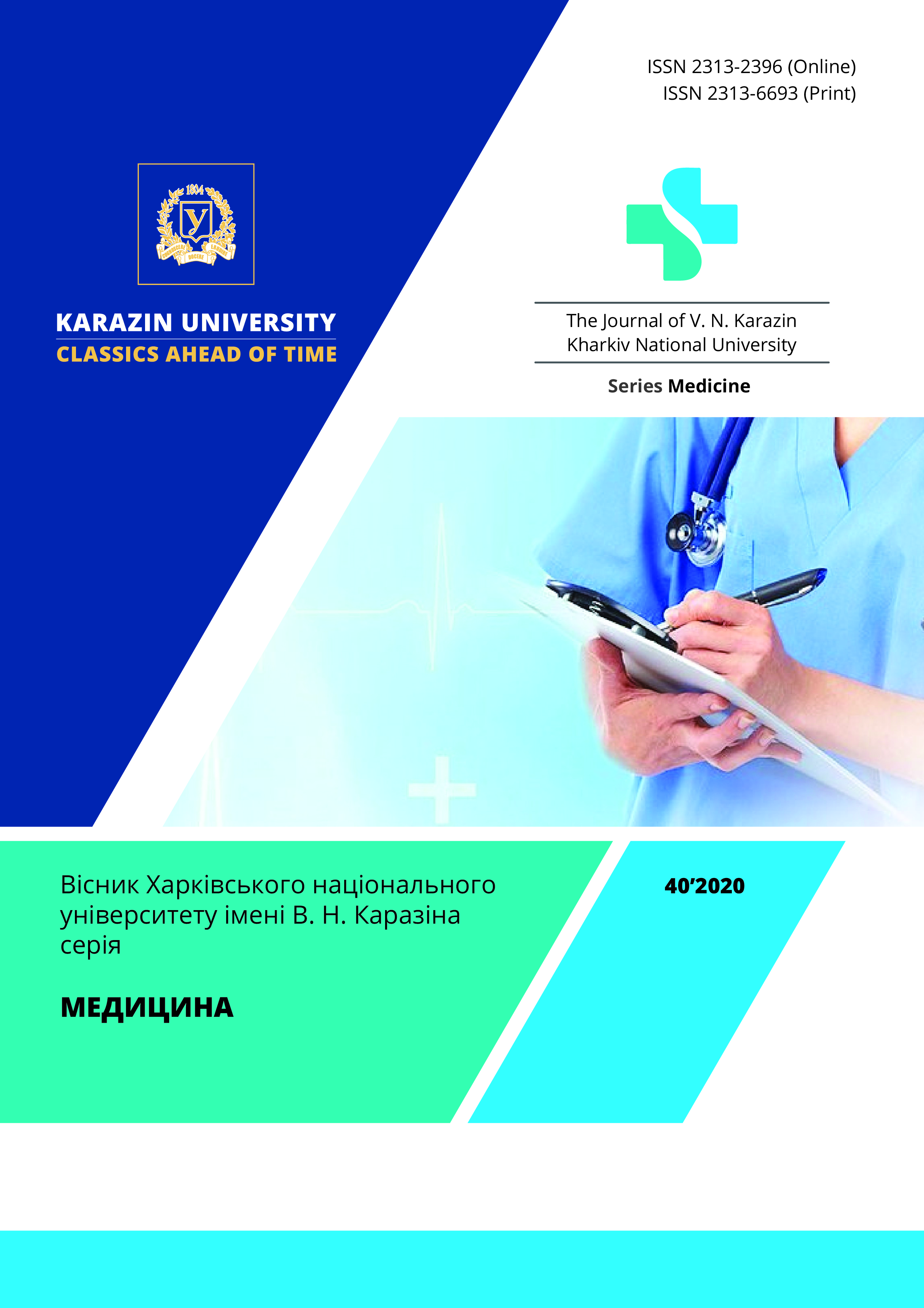Dependence of QT (QTc) interval duration on the blood pressure level in patients with arterial hypertension
Abstract
Introduction. Arterial hypertension is associated with electric instability of the myocardium and the development of fatal ventricular arrhythmias. One of the main causes for the electric instability of the myocardium is the in homogeneity of the ventricular repolarization processes, which can be estimated by studying QT interval duration and dispersion. Objectives.To study the dependence of QT interval (QTc) duration on the level of blood pressure in patients with arterial hypertension using a standard ECG recording and an ambulatory ECG monitoring. Materials and methods. Were examined147 patients, 124 of which with arterial hypertension and 23 without arterial hypertension. Patients were divided into 5 groups according to their blood pressure level: group 1 – normal or elevated blood pressure on a background of antihypertensive therapy: 56 patients (38.1 %), group 2 –grade 1 hypertension; 39 patients (26, 5 %), group 3 –grade 2 hypertension: 22 patients (15 %), group 4 –grade 3 hypertension: 7 patients (4.8 %), the fifth group – normal or elevated pressure: 23 patients, which is 15.6 % (comparison group, without arterial hypertension). The study of the dependence of QT interval (QTc) duration on the level of BP was carried out according to the analysis of the data of standard ECG, ECG Holter monitoring and 24-hour blood pressure monitoring. Results. A statistically significant regression dependence of the duration of minimal nocturnal QT intervals and corrected QTc on the stage of arterial hypertension in groups 1 and 4 with p < 0.05 was establishedon the basis of Student’s t-test for independent samples. Conclusions. There was a statistically significant regression dependence of the minimum QT interval at night and the minimum corrected interval QTc at night on the daily level of variability 1 of systolic blood pressure, which indicates a direct dependence of the QT interval and QTc on blood pressure.
Downloads
References
Chow CK, Teo KK, Rangarajan S, et al. Prevalence, awareness, treatment, and control of hypertension in rural and urban communities in high-, middle-, and low-income countries. JAMA. 2013; 310(9): 959–968. https://doi.org/10.1001/jama.2013. 184182
Sirenko YuN. Arterialnaya gipertenziya i serdechno-sosudistyy risk. Kiyev: Chetvertaya volna; 2009.159s.
Blacher J, Evans A, Arveiler D, et al. Residual cardiovascular risk in treated hypertension and hyperlipidaemia: the PRIME Study. J Hum Hypertens. 2010; 24 (1): 19–26. https://doi.org/10.1038/jhh.2009.34
Dolan E, Stanton AV, Thom S, et al. Ambulatory blood pressure monitoring predicts cardiovascular events in treated hypertensive patients – an Anglo-Scandinavian cardiac outcomes trial substudy. J Hypertens. 2008; 27: 876–885.
Yabluchanskyi NІ, Martynenko AV, Martymianova LA. Ambulatornaia elektrokardyohrafyia. Seryia: dlia nastoiashchykh vrachei. – Kh.: – KhNU imeni. V. N. Karazyna, 2015; 113.
Breidthardt T, Christ M, Matti M, et al. QRS and QTc interval prolongation in the prediction of long-term mortality of patients with acute destabilised heart failure. Heart. 2007; 93 (9): 1093–1097. https://doi.org/10.1136/hrt.2006.102319
2018 ESC/ESH Guidelines for the management of arterial hypertension. European Heart Journal. 2018; 39 (33): 3021–3104. https://doi.org/10.1093/eurheartj/ehy339
Sirenko YuN. Gipertonicheskaya bolezn' i arterial'nyye gipertenzii Donetsk: Izdatel' Zaslavskiy AYU. 2011: 288 s.
Gao C, Yang D. Electrical inhomogeneity in left ventricular hypertrophy. Cell Biochem Biophys. 2014; 69 (3): 399–404. https://doi.org/10.1007/s12013-014-9850-6
Dimopoulos S, Nicosia F, Donati P, et al. QT dispersion and left ventricular hypertrophy in elderly hypertensive and normotensive patients. Angiology. 2008; 59 (5): 605–612. https://doi.org/10.1177/0003319707310276
Makarov LM. Kholterovskoye monitorirovaniye. 4-ye izdaniye. M.: ID t «MEDPRAKTIKA-M»; 2017: 504 s.
Al-Khatib SM, Stevenson WG, Ackerman MJ, et al. 2017 AHA/ACC/HRS Guideline for Management of Patients With Ventricular Arrhythmias and the Prevention of Sudden Cardiac Death: A Report of the American College of Cardiology/American Heart Association Task Force on Clinical Practice Guidelines and the Heart Rhythm Society [published correction appears in J Am Coll Cardiol. 2018 Oct 2; 72 (14): 1760]. J Am Coll Cardiol. 2018; 72 (14): 91–220. https://doi.org/10.1016/j.jacc.2017.10.054
Antzelevitch C, Oliva A. Amplification of spatial dispersion of repolarization underlies sudden cardiac death associated with catecholaminergic polymorphic VT, long QT, short QT and Brugada syndromes. J Intern Med. 2006; 259 (1): 48–58. https://doi.org/10.1111/j.1365-2796.2005.01587
Zareba W, Cygankiewicz I. Long QT syndrome and short QT syndrome. Prog Cardiovasc Dis. 2008; 51 (3): 264–278. https://doi.org/10.1016/j.pcad.2008.10.006
Tselik NE, Shmidt OY, Martinenko OV, Yabluchanskyi MI. Distribution of QT duration according to ambulatory ECG monitoring data in patients with hypertension depending on clinical manifestations. The Journal of V. N. Karazin Kharkiv National University, series «Medicine». 2018; 35: 66–71. https://doi.org/10.26565/2313-6693-2018-35-10
Diahnostyka ta likuvannya ekstrasystoliyi ta parasystoliyi. Rekomendatsiyi Robochoyi hrupy z porushen rytmu sertsya Asotsiatsiyi kardiolohiv Ukrayiny. Kyyiv. 2012: 20–21 s.
Mezue K, Goyal A, Pressman GS, Matthew R, Horrow JC, Rangaswami J. Blood pressure variability predicts adverse events and cardiovascular outcomes in SPRINT. J Clin Hypertens (Greenwich). 2018; 20 (9): 1247–1252. https://doi.org/10.1111/jch.13346. Epub 2018 Jul 9
The Journal of V. N. Karazin Kharkiv National University, series Medicine has following copyright terms:
- Authors retain copyright and grant the journal right of first publication with the work simultaneously licensed under a Creative Commons Attribution License that allows others to share the work with an acknowledgement of the work’s authorship and initial publication in this journal.
- Authors are able to enter into separate, additional contractual arrangements for the non-exclusive distribution of the journal’s published version of the work, with an acknowledgement of its initial publication in this journal.
- Authors are permitted and encouraged to post their work online prior to and during the submission process, as it can lead to productive exchanges, as well as earlier and greater citation of published work.




